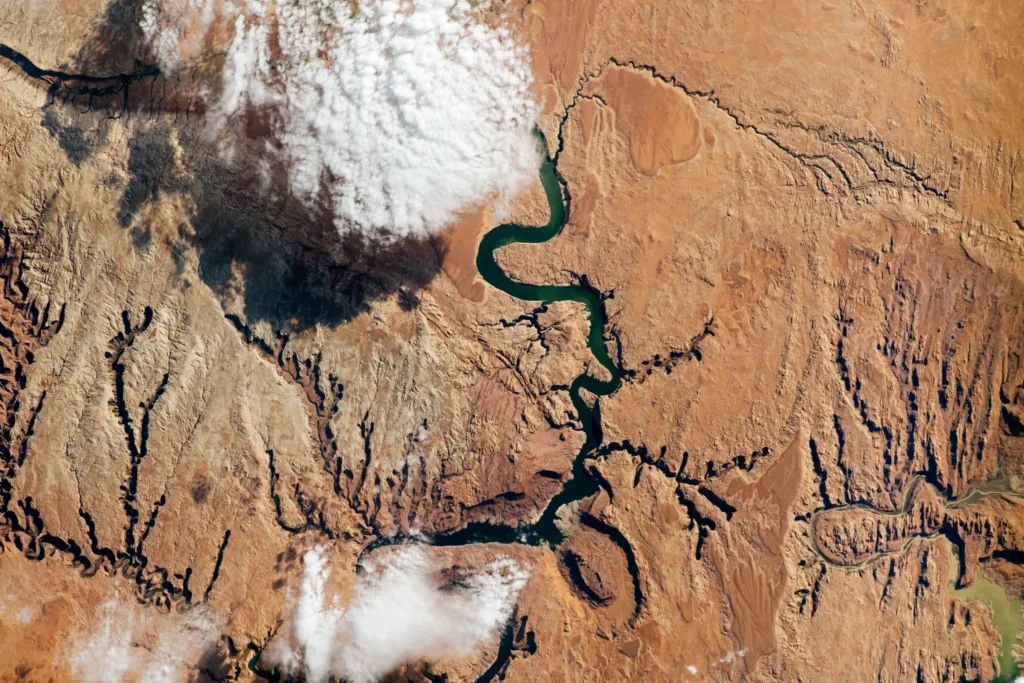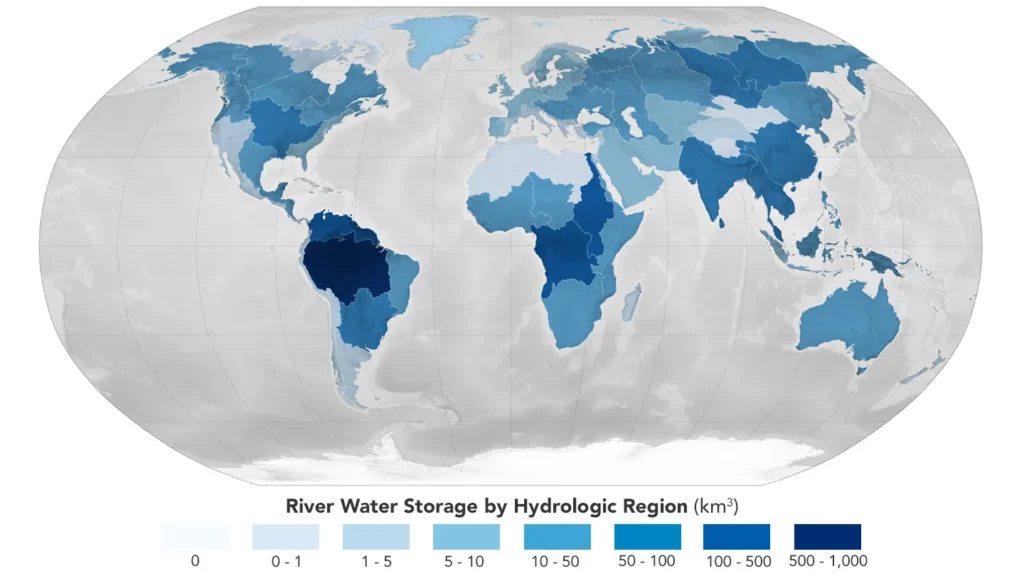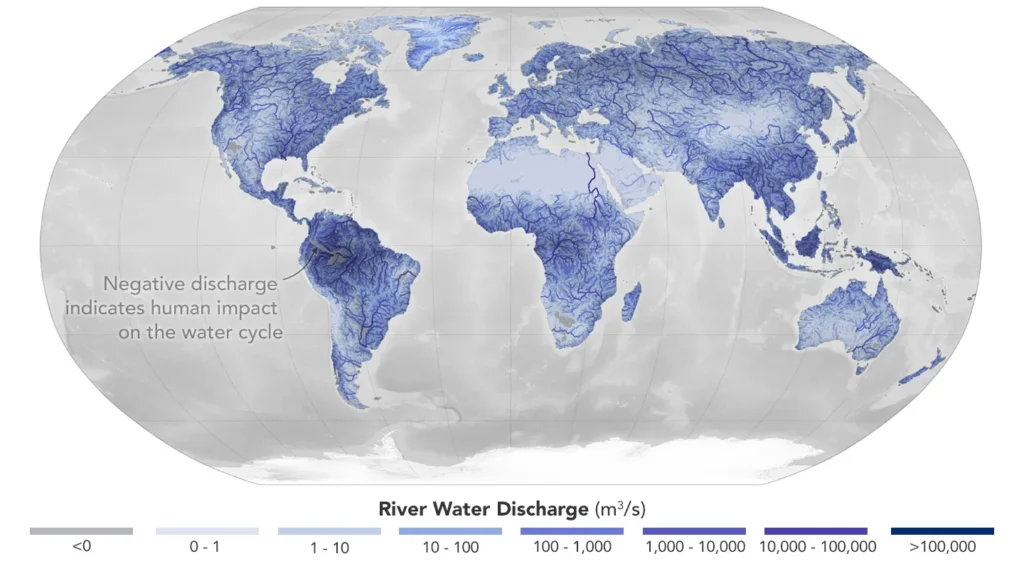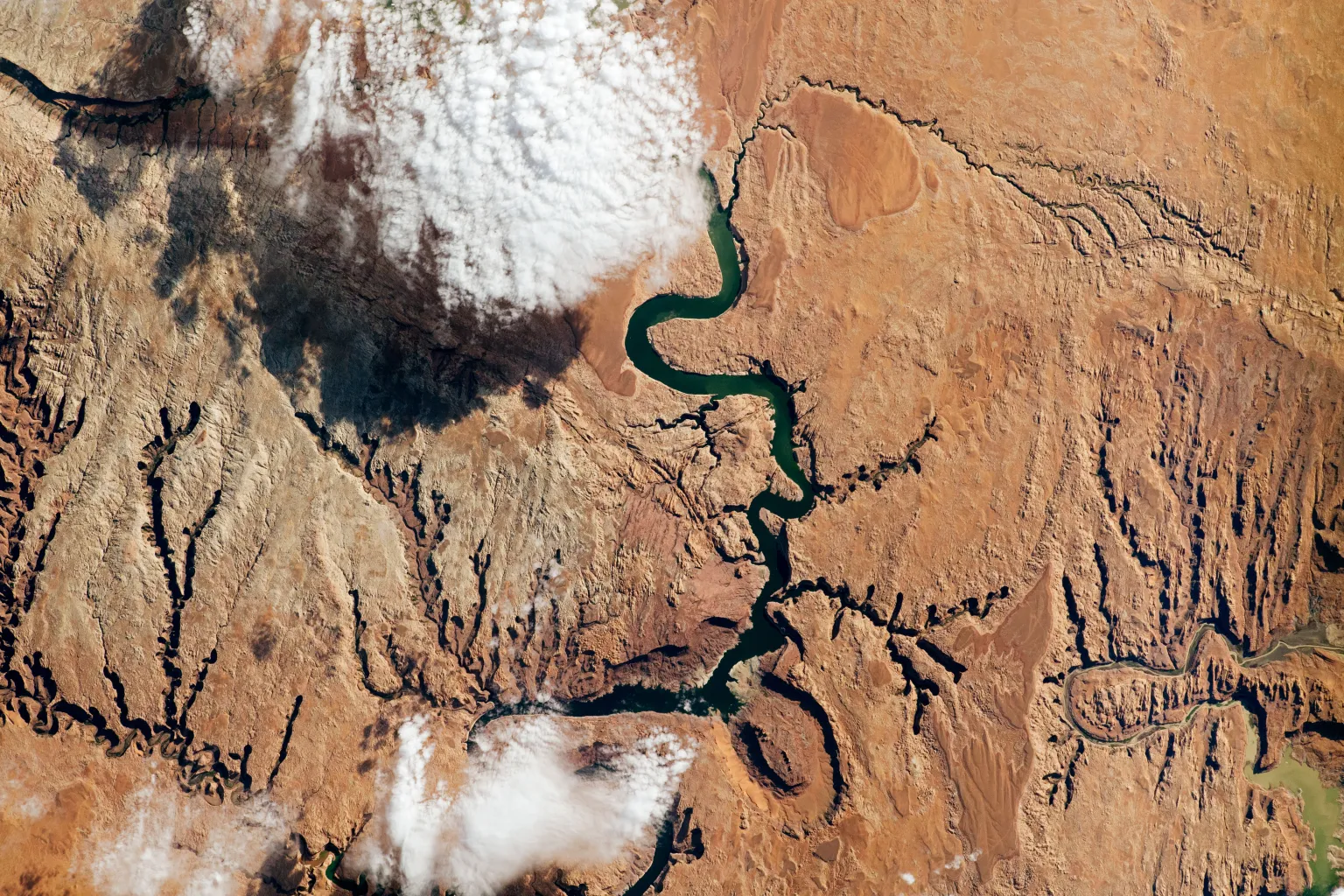NASA river study, global water cycle, river water storage, freshwater management, Earth’s rivers, water discharge rates, hydrological research, environmental science, water resources, SWOT satellite
Discover the latest findings from a NASA-led study published in Nature Geoscience, providing new estimates on the volume and flow of water in Earth’s rivers. Learn how this crucial research helps in understanding the global water cycle and managing freshwater supplies, with insights into regional impacts and advanced methodologies.

In a groundbreaking study spearheaded by NASA researchers, new insights into Earth’s river systems have been revealed, shedding light on the volume of water in rivers, its flow into the oceans, and the temporal variations of these metrics. This research, crucial for enhancing our understanding of the global water cycle and improving freshwater management, was recently published in Nature Geoscience. The study utilized an innovative methodology developed by scientists at NASA’s Jet Propulsion Laboratory (JPL) in Southern California, combining traditional stream-gauge measurements with advanced computer modeling of approximately 3 million river segments worldwide.
Global River Water Estimates

The NASA-led team has provided a fresh perspective on the hydrological cycle by estimating that, on average from 1980 to 2009, Earth’s rivers held 539 cubic miles (2,246 cubic kilometers) of water. This volume is equivalent to half of Lake Michigan’s water and represents about 0.006% of the planet’s total freshwater reserves. Despite constituting a small fraction of Earth’s total water, rivers play a critical role in sustaining human civilizations and ecosystems alike.
Challenges in River Water Storage and Discharge Estimations

Historically, numerous attempts have been made to quantify how much water rivers discharge into oceans. However, understanding the total water storage within rivers themselves has been less studied and is fraught with uncertainties. Cédric David, a JPL scientist and co-author of the study, emphasized the importance of this data, likening it to knowing the balance in a checking account amid complicating factors such as population growth and climate change. This information is pivotal for strategic water resource management and ensuring sustainable water supplies for future generations.
Advanced Techniques and Satellite Integration
A novel aspect of this research involves the potential future integration of study findings with data from the Surface Water and Ocean Topography (SWOT) satellite, launched in December 2022. SWOT is designed to map water elevations globally, and its data can significantly refine measurements of how human activities impact the water cycle by observing changes in river heights, which can indicate variations in water storage and discharge.
Regional Insights and Human Impacts
The study highlights specific regions where river water storage is heavily influenced by human consumption. Notably, the Colorado River basin in the United States, the Amazon basin in South America, and the Orange River basin in southern Africa have all experienced significant water depletion. The Amazon basin stands out both for its substantial water storage, holding approximately 204 cubic miles (850 cubic kilometers) of water, and for its high rate of discharge into the ocean, with an annual output of 1,629 cubic miles (6,789 cubic kilometers).
In some river basins, such as the Colorado and the Murray-Darling in southeastern Australia, the study identified instances of ‘negative discharge’, where downstream water volumes are less than upstream inputs, primarily due to intensive water extraction for agricultural and urban uses.
Methodological Innovations and Global Mapping
This research marks a departure from traditional methods primarily based on the 1974 United Nations estimates. By harnessing high-resolution global maps and land-elevation data, including imagery from NASA’s Shuttle Radar Topography Mission, the researchers could model river runoff with greater precision. This approach not only provides more accurate estimates of river discharge but also facilitates a detailed analysis of monthly and average water storage across the globe.
Implications for Future Water Management
The methodology employed in this study enables comparisons of water flow and human withdrawals across different regions, offering a clearer picture of where river water is most abundant and where it is most heavily utilized. Such insights are essential for policymakers, conservationists, and water resource managers as they plan for future challenges posed by environmental changes and increased water demand.
Conclusion
NASA’s study on global river systems is a significant advancement in environmental science, offering essential insights into the dynamics of Earth’s freshwater resources. By improving our understanding of river water storage and flows, this research paves the way for more informed decisions in managing the precious water resources that sustain life on our planet. As we face increasing environmental pressures, the continued exploration and monitoring of our natural resources remain more crucial than ever.
Read More-
- NASA Artemis Generation: Cultivating the Moon Trees Across America
- NASA Fermi Reveals the Universe in New E-Book
- National Space Technology Development Priorities: NASA Revised Strategy
- NASA Pioneering Airborne Missions: Advancing Earth and Climate Science










